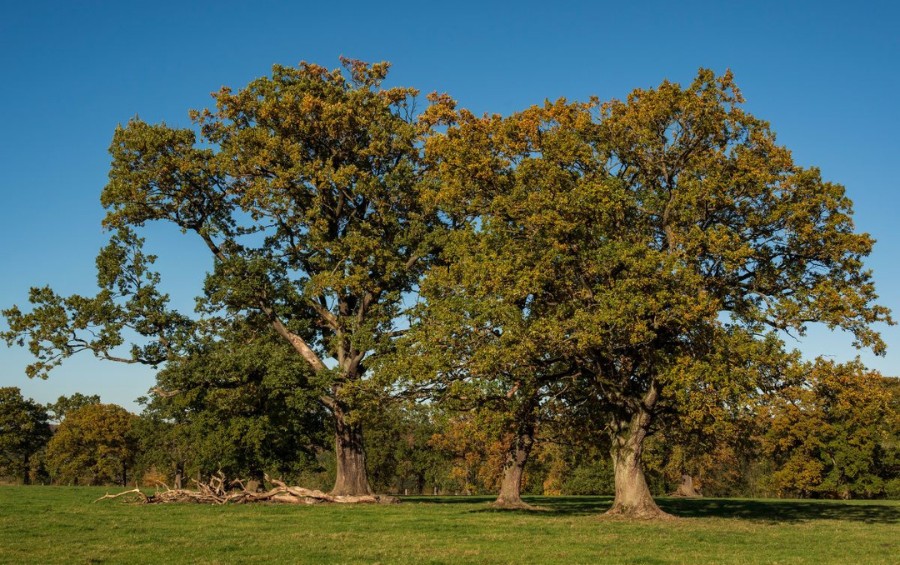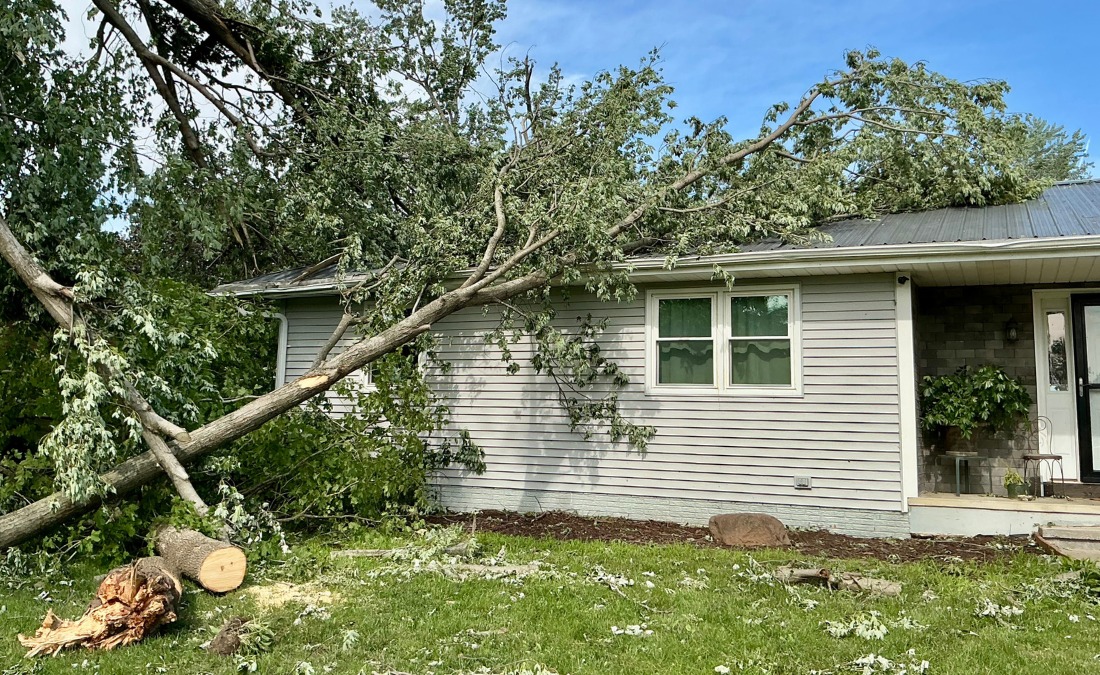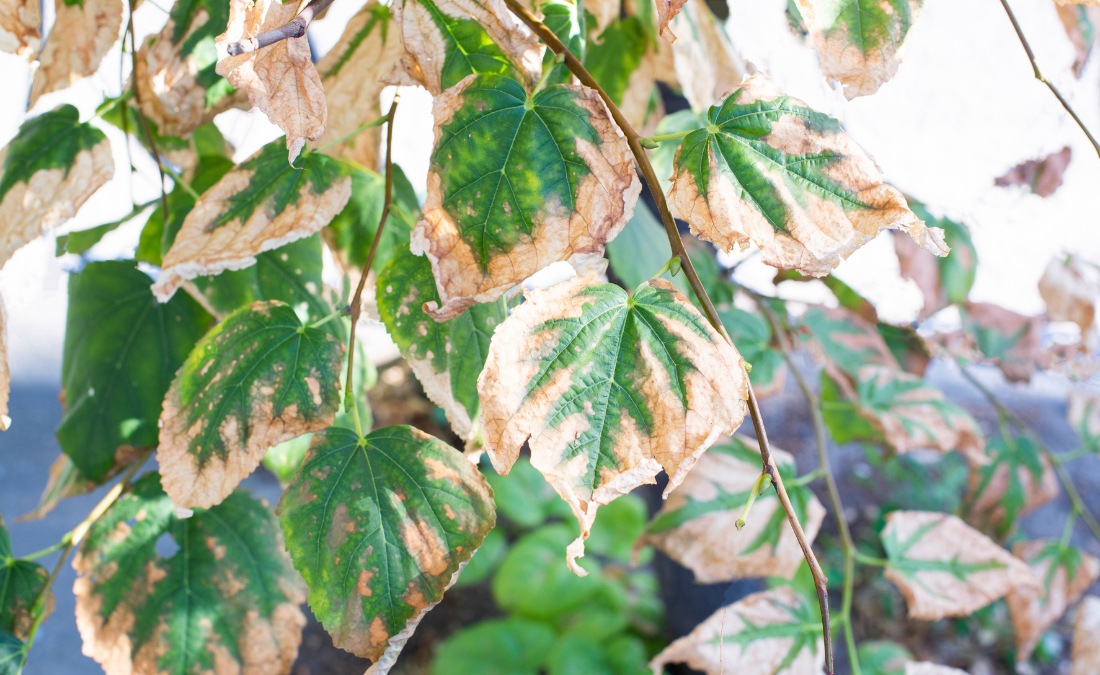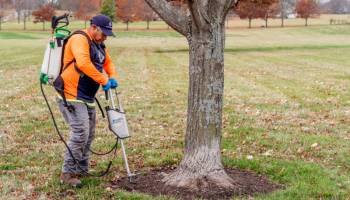Don’t Let Your Des Moines Trees Succumb to Drought Stress This Summer

Four years of drought left Des Moines trees vulnerable, and dry conditions are returning. Learn to recognize the symptoms and how to support your trees.
Just when Des Moines residents thought they could breathe easy, drought is knocking on our door again. Iowa ended a devastating four-year drought in May 2024 – one of the longest streaks the state has seen since the 1950s – but that relief seems to be short-lived.
After just one year of recovery, Iowa’s long-range forecast shows troubling signs that the state could see an elevated warm and dry period over the next few months, worsening already abnormally dry conditions across Polk County. Your trees, which may have just started recovering from years of stress, could soon face another battle for survival. The difference is, this time you know what’s coming and how to save your trees.
Key Takeaways
- Des Moines is facing another potential drought after just one year of recovery from a devastating four-year dry spell, putting already weakened trees at serious risk.
- Drought stress triggers a domino effect in trees – root damage leads to leaf problems, which stops food production and makes trees defenseless against pests and diseases
- Drought stress symptoms range from early signs of leaf wilting and yellowing to critical signs like bark cracking and significant branch dieback.
- Proper watering requires deep, infrequent application at the drip line using soaker hoses, aiming for 1 inch per week applied slowly to penetrate Des Moines’ clay soil.
- When water bans are in place, you can still keep your trees healthy by hand-watering with a hose on low trickle, using TreeDiapers for extended moisture release, repurposing greywater from household sinks and showers, and applying mulch to retain soil moisture.
What Drought Stress Actually Does to Your Trees
To understand why drought is so devastating, you need to know that water isn’t something trees “drink” – it’s the foundation of nearly everything they do.
Water is where all the chemical reactions inside tree cells happen. It’s the main component of living cell material, and trees use it as a raw material for photosynthesis (the process that creates their food). Water also creates the pressure that helps new cells expand and grow, which is how trees get bigger and stronger.
When drought hits, here’s what happens inside your tree:
The Roots Suffer
The delicate hair-like roots that extend from the main roots are responsible for most water uptake, and they’re confined to the upper 15 inches of soil – exactly where drought hits first. When soil dries out, it shrinks away from these tiny root hairs, creating gaps. As your tree continues losing water through its leaves, water gets pulled out of root cells, causing them to shrink and eventually die.
The Leaves Shut Down
Your tree’s first defense is closing the tiny pores (stomates) in its leaves to stop water loss. The problem is that these same pores are how trees take in carbon dioxide for photosynthesis. When they close, your tree can’t make food. Recovery from this shutdown is slow. Even when water becomes available again, it may take hours, days, or even weeks for normal function to return.
Food Production Crashes
Without carbon dioxide, photosynthesis grinds to a halt. This forces the tree to start shedding leaves to conserve the little energy it has left. But fewer leaves means even less ability to make food when conditions improve, creating a downward spiral that’s hard to reverse.
Defenses Crumble
Trees use the carbohydrates from photosynthesis to make defensive compounds that fight off insects and diseases. As food production drops, so does the tree’s ability to defend itself. That’s why drought-stressed trees become sitting ducks for pests like borers and scale insects and diseases.

What Does a Drought-Stressed Tree Look Like?
Drought stress symptoms can range from subtle changes you might barely notice to obvious signs that your tree is in serious trouble. Knowing what to look for – and how urgent each symptom is – can mean the difference between saving your tree and losing it.
Here’s what to watch for:
- Wilting or drooping leaves during the hottest parts of the day
- Lighter green to yellow-green foliage throughout the canopy
- Leaf scorch (browning) around the edges
- Leaf curling
- Premature leaf drop
- Smaller than normal leaves
- Unusually heavy seed or fruit production
- Branch dieback starting from the top of the canopy
- Bark cracking and peeling
- Surface roots becoming visible through soil cracks
- Significant thinning of the canopy
How to Save Drought-Stressed Trees
When your trees are showing drought stress, how you water can make the difference between recovery and decline. Unfortunately, most well-meaning homeowners use techniques that waste water and don’t actually help their trees. Learning the right approach can save your trees – and your water bill.
The Right Technique
Deep, infrequent watering is key. You want to penetrate deeply into the soil to encourage deep root growth, not just a wet surface. Focus on the drip line – the area directly under the outer edge of your tree’s canopy – not the trunk. This is where the feeder roots that absorb moisture are located.
Water early in the morning to minimize evaporation loss. Our Des Moines clay soil presents a challenge because water can run off the surface instead of penetrating. Use soaker hoses or drip irrigation to apply water slowly, allowing it to soak in rather than pool or run off.
How Much Water Your Trees Actually Need
Large mature trees require substantial amounts of water – often hundreds of gallons per week during drought conditions. For practical purposes, aim for about 1 inch of water per week during drought, applied slowly over several hours.
Signs You’re Watering Your Trees Properly
You’ll know you’re watering correctly when the soil is moist 12-18 inches deep at the drip line. If water is pooling or running off the clay soil surface, you’re applying it too fast. Watch for signs of overwatering, such as yellowing leaves starting from the bottom of the tree, mushy or black roots, fungal growth around the base, and a sour smell emanating from the soil.
How to Water Trees During a Water Ban
Central Iowa Water Works recently enacted its first-ever lawn watering ban due to high nitrate levels in local rivers. And while we know this specific ban is only temporary until nitrate levels return to a safe level, water bans are becoming more and more frequent across the Midwest due to drought conditions and rising demand on water systems.
However, your trees can’t wait for the ban to be lifted. Here’s how to keep them healthy when watering restrictions are in place:
- Hand Watering: Water bans typically restrict automatic sprinklers and lawn irrigation, making watering trees with a hose still perfectly acceptable. Set your hose on a low trickle to deliver water slowly and directly to your trees’ root zones.
- TreeDiapers and Watering Bags: These slow-release systems wrap around tree trunks, delivering water directly to the root zones over several hours with minimal waste. TreeDiapers can provide supplemental moisture for weeks or even a month or longer, depending on weather conditions, making them ideal for extended water restrictions. They’re particularly effective for newly planted trees and can reduce water usage by up to 50% compared to traditional watering methods.
- Greywater: Don’t let household water go to waste. Water from bathroom sinks, showers, and washing machines can provide your trees with a drink when water restrictions are tight. Just avoid water from kitchen sinks (which can contain too much grease and food particles) and skip anything with bleach, disinfectants, or harsh cleaning products.
- Mulch for Water Retention: Apply 2-3 inches of organic mulch around trees to reduce evaporation and help the soil retain moisture for longer periods. Keep mulch several inches away from the trunk to prevent pest and disease issues.
During any water restriction, check with your local water authority about what’s specifically allowed in your area. When in doubt, contact a Certified Arborist for guidance on keeping your trees healthy during water emergencies.
Frequently Asked Questions About Caring for Drought-Stressed Trees
How can I tell if my tree is dying from drought or something else?
Drought stress typically affects the entire tree gradually, starting with leaf symptoms and progressing to branch dieback from the top down. Disease or pest problems often show more localized symptoms or unusual patterns. When in doubt, have a Certified Arborist evaluate your tree.
Should I fertilize my drought-stressed trees?
No, you should not fertilize your drought-stressed trees. Fertilizer can actually further stress trees affected by drought by encouraging new growth that they can’t support. Focus on water and mulch first. Once your tree recovers, consider fertilization.
Can I prune drought-stressed trees to help them recover?
Light pruning to remove dead branches is okay, but it’s best to avoid major pruning on stressed trees. Pruning stimulates new growth that requires water and energy your tree doesn’t have. Wait until recovery begins.
When is a drought-stressed tree beyond saving?
Trees with extensive branch dieback (more than 50% of the canopy), severely cracked bark on the main trunk, or signs of advanced decay are often beyond recovery. Safety also becomes a concern when drought stress has compromised tree structure.
Get Professional Help for Your Drought-Stressed Trees from Arbor Masters
Recognizing drought stress early and watering correctly can save most trees, but some situations require professional expertise. Whether your trees need immediate assessment or you want to build their long-term resilience, you don’t have to navigate this alone.
Arbor Masters’ ISA Certified Arborists can assess your trees and create a recovery plan. While proper watering is your first line of defense, we can work together with treatments like deep root fertilization this fall and strategic pruning this winter to help your trees bounce back stronger. We’ve guided countless Des Moines homeowners through drought recovery, and we know exactly what your trees need to survive.
Call 515-218-2025 today to schedule a free estimate. Your trees can’t wait – and neither should you.

Get the latest local news, tree care tips, special offers, and company updates directly to your inbox! It's easy to subscribe and there's no spam - we promise.
"*" indicates required fields





